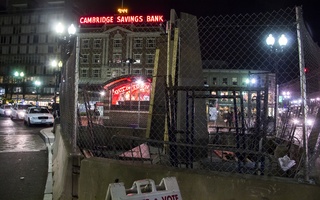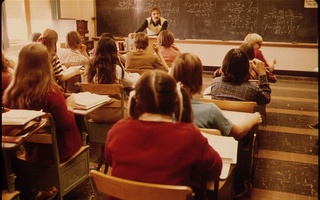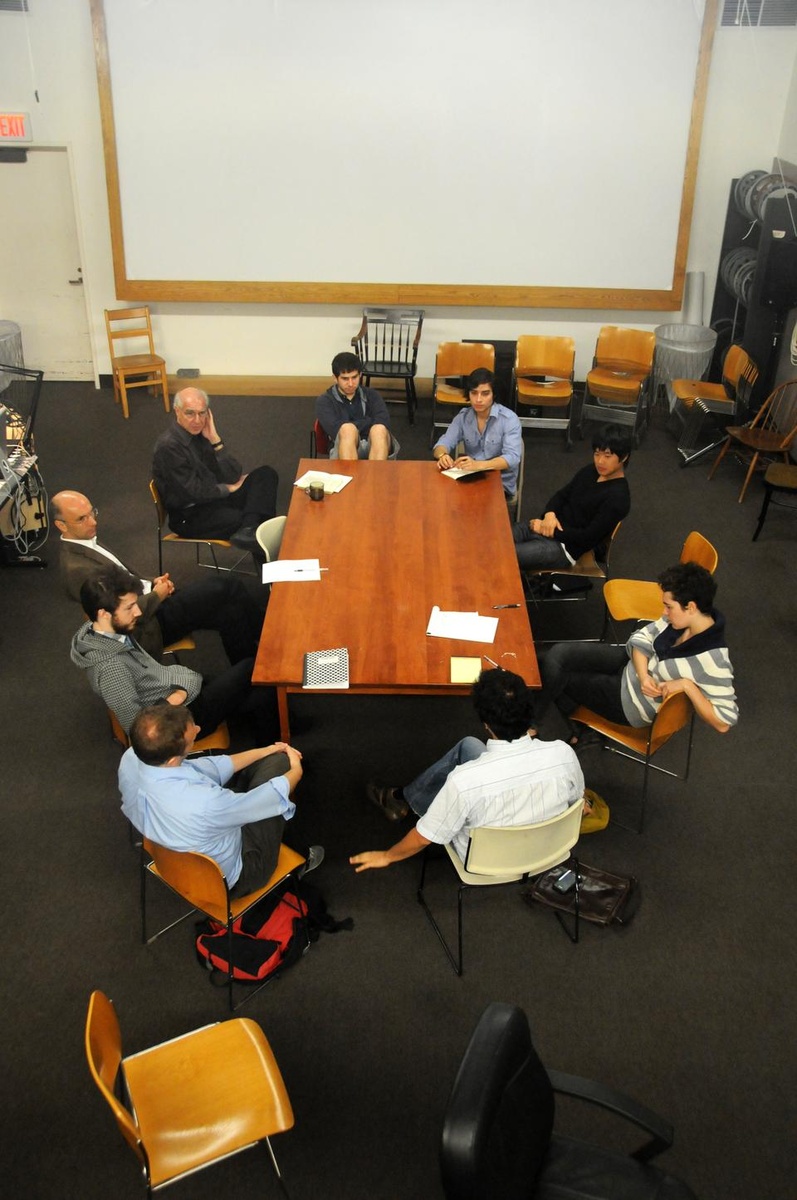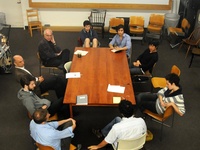“In some sense, we had a really nice fight,” says fourth-year Ph.D. music composer Edgar A. Barroso when describing his first experience working with his partner, a video maker, in Visual and Environmental Studies (VES) 157t: “Electro-acoustic Music and Video in Dialogue.” Occasional disagreements aside, the principal aim of this course is to foster productive collaboration and exploration during the artistic process.
As the brainchild of VES professor Alfred Guzzetti and Music professor Hans Tutschku, the instructors were inspired to develop this class after realizing the importance of developing a common language between visual and musical artists.
Tutschku described his thought process behind the course saying, “You see a lot of attempts where musicians and video makers try to work together, and most of the time there’s a problem of communication where they don’t really know what the other medium is able to do.
For Guzzetti, VES 157t is about pushing one’s limits. “The way the course proceeds is that each person learns something as much as they can about the other art, so the composers and video makers aren’t supposed to stay in their little boxes,” he says.
The course requirements consist primarily of four projects in which each visual artist will be paired with a fellow composer. Though the students are initially working in the medium they are most comfortable with, the artists will eventually trade roles with their partners.
By the end, everyone will have had to undertake both jobs in solo projects. These will then be showcased in December at Paine Music Hall using two video screens as well as a Hydra sound-system.
For the first assignment entitled “Water,” Abel Acuna ’11 and Jonathan Jain ’12 attempted to create a sequence with a man filling up a Super Soaker and running down the street.
“We showed this to Hans and Alfred, and they totally hated it,” Acuna says. “They said, ‘You constructed this scene here. This isn’t want we wanted.’ They insisted we construct something out of something very simple.”
Heeding their professors’ advice, he and Jain decided to return to the basics and create a piece around the idea of a faucet spraying down water.
Barroso says he tried to transcend the triteness of water and design something not-too- perfect and not-too-chaotic.
By playing with image-sound delay, he and his video maker partner, Elizabeth B. Wood, a second year resident tutor in Cabot and a fourth-year biophysics graduate student at Massachusetts Institute of Technology, managed to create a piece with ice cubes striking and melting against a metal bowl.
Barroso says having another pair of ears in the recording and editing studio forced him to reexamine and defend his artistic decisions. Because Wood was able to offer him opinions that weren’t necessarily musically-refined, Barroso says, “She really taught me how to listen in a different way.”
The course’s three other audiovisual projects focus on motion, the duality of sound and image, and finally, rhythm. For Tutschku, rhythm is the “overarching theme” of the second half of the semester.
Despite its usual association with music, he says rhythm plays a vital role in video composition.
Likewise, Guzzetti believes there are many similarities between video making and electro-acoustic composition.
Read more in Arts
As Foster Finalist, Siegel's Profile RisesRecommended Articles
-
Sound Installation for Cultural TunesThose walking by the Carpenter Center Thursday afternoon might have heard what sounded like oriental tunes coming from the roof of the building.
-
 Harvard Square Statue To Be Relocated
Harvard Square Statue To Be Relocated -
VES Class Sizes Spark ControversyThe competitive process of being admitted into VES classes often presents an obstacle for prospective concentrators, who are frequently unable to take classes in the department until their sophomore year.
-
 Are the SAT and ACT Too Distanced From High School Work?
Are the SAT and ACT Too Distanced From High School Work?















